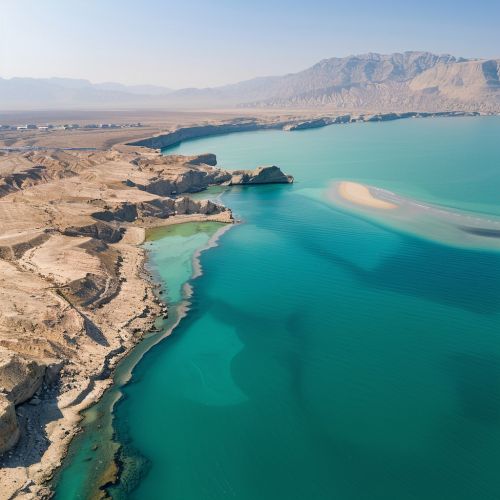Persian Gulf
Geography
The Persian Gulf is a mediterranean sea in Western Asia. The body of water is an extension of the Indian Ocean (Gulf of Oman) through the Strait of Hormuz and lies between Iran to the northeast and the Arabian Peninsula to the southwest. The Shatt al-Arab river delta forms the northwest shoreline. The body of water is historically and internationally known as the "Persian Gulf".


Geology
The Persian Gulf was a product of the collision of the Arabian tectonic plate with the Eurasian plate, which began around 30 million years ago. The process of plate tectonics formed the Zagros Mountains, a range that stretches from the border of Iran and Iraq to the Persian Gulf. The gulf itself is a young body of water, having been filled as recently as 15,000 years ago.
Hydrology
The gulf's strategic location has given it a significant role in human history. It is a relatively shallow body of water, with an average depth of 50 meters, although it plunges to 90 meters off the coast of Qatar. The Persian Gulf is connected to the Gulf of Oman and the Arabian Sea through the narrow Strait of Hormuz. The gulf's water is generally very saline, and the refraction of sunlight by its water gives it a distinct azure color.
Climate
The climate of the Persian Gulf is classified as a desert climate, with very hot and humid summers and mild winters. The region is one of the hottest places on earth, with summer temperatures often exceeding 40 degrees Celsius. The high humidity in the region, particularly in the coastal areas, exacerbates the feeling of heat.
Biodiversity
The Persian Gulf is home to a wide range of marine and bird life. The region is rich in fish species, with more than 200 species recorded. The region's diverse bird population includes flamingos and several types of sea eagles. The Persian Gulf is also home to the world's largest population of the endangered dugong, a large marine mammal that feeds on underwater grasses.
History
The Persian Gulf has a rich history dating back to ancient times. The region was the birthplace of several ancient civilizations, including the Sumerians, Babylonians, and Persians. The gulf was a key center of trade and commerce in the ancient world, and its strategic location continues to make it a crucial region in modern times.
Economy
The Persian Gulf region is known for its vast reserves of crude oil, and the gulf itself is a major shipping route for the export of this resource. The region's oil reserves have made it a major focus of international relations and conflict. In addition to oil, the region also has significant reserves of natural gas, particularly in the giant South Pars / North Dome Gas-Condensate field, which is shared by Iran and Qatar.
